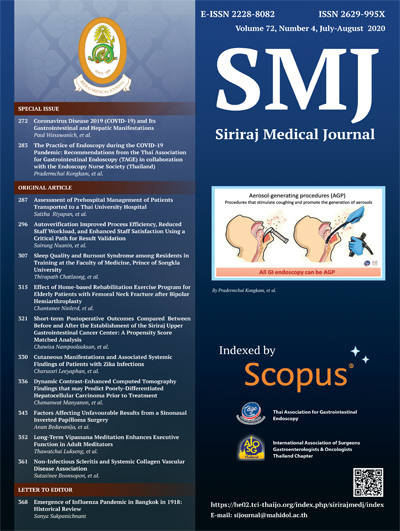Autoverification improved process efficiency, reduced staff workload, and enhanced staff satisfaction using a critical path for result validation
DOI:
https://doi.org/10.33192/Smj.2020.40Keywords:
Autoverification, critical path, delta check, full-time equivalent, laboratory information system, turnaround timeAbstract
Objective: Continuous process improvements enhance accuracy and productivity in a clinical laboratory setting. This study aimed to investigate the accuracy and efficiency of a new autoverification (AV) system designed to improve the consistency and uniformity of reported laboratory test results.
Methods: Limit checks, delta checks, and consistency checks were established, and then retrospective data from 500 requested tests were used to evaluate the accuracy of AV rules compared to manual verification, which was performed by five experienced medical technologists. Efficiency was evaluated by comparing turnaround time (TAT), error rates, workload, and staff satisfaction between before and after AV implementation.
Results: AV had 100% sensitivity, 77.6% specificity, and a 22% false-positive rate. The AV passing rate was 95%, 85%, 42%, and 39% for chemistry, coagulation, microscopy, and hematology, respectively. The overall passing rate was 65%. After implementation, the mean overall TAT decreased from 54.2±26.6 to 52.4±24.2 min (p<0.001). However, TAT during peak hours increased (p<0.05). Incident reports decreased 8-fold (p<0.05), net workload decreased by 0.76 full-time equivalent, and overall staff satisfaction increased (p<0.001).
Conclusion: Our laboratory’s new AV system demonstrated an overall passing rate of 65% with decreases in TAT, incident reports, and workload, and an increase in staff satisfaction.
Downloads
Published
How to Cite
Issue
Section
License
Authors who publish with this journal agree to the following conditions:
Copyright Transfer
In submitting a manuscript, the authors acknowledge that the work will become the copyrighted property of Siriraj Medical Journal upon publication.
License
Articles are licensed under a Creative Commons Attribution-NonCommercial-NoDerivatives 4.0 International License (CC BY-NC-ND 4.0). This license allows for the sharing of the work for non-commercial purposes with proper attribution to the authors and the journal. However, it does not permit modifications or the creation of derivative works.
Sharing and Access
Authors are encouraged to share their article on their personal or institutional websites and through other non-commercial platforms. Doing so can increase readership and citations.















